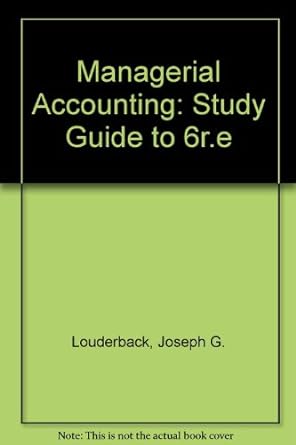Answered step by step
Verified Expert Solution
Question
1 Approved Answer
Which of the following is/are requirements for a married couple to exclude $500,000 of gain from the sale of their residence? Only one spouse must
| Which of the following is/are requirements for a married couple to exclude $500,000 of gain from the sale of their residence? Only one spouse must meet the ownership requirement of two out of five years preceding the sale. Both spouses must have used the home as their principal residence in two out of five of the previous years prior to the sale date. Both spouses must have been legally married for two out of the five years immediately preceding the sale. All of the above are required to exclude $500.000 of gain. Only A & B are requirements to exclude $500,000 of gain on the sale of the residence. |
| Which of the following statements is/are true? If a taxpayer cannot meet the ownership and use requirements of IRC 121 due to health reasons or unforeseen circumstances, a reduced exclusion is available. A divorced spouse who received the home from a former spouse in a divorce settlement can include the ownership period of the former spouse in meeting the ownership requirements for sale of the home by the new owner/divorced spouse. Gain on the sale of a residence allocated to periods where the home was used for a nonqualified use (rental or business purposes) must be included in the taxpayer's income Only A & B are true. All of the above are true. |
| Which of the following statements is false? Exclusion of gain from the sale of residential property does not apply to any period of nonqualified use. Non-qualified use is defined as any time period during which the taxpayer, the taxpayer's spouse, or former spouse did not use the property as a principal residence but instead used it for some other purpose, such as a temporary vacation home, a rental property, or for use in a trade or business. Exclusion of gain under IRC 121 is only available for a principal residence. It is not available for a second home, or vacation home, or any property used as a residence only intermittently. A taxpayer may have more than one principal residence. As long as an employer does not acquire the benefits and burdens of ownership of the employees home, all payments made by an employer for employee relocation assistance are generally deductible by the employer as employee compensation and are taxable as wages to the employee. |
| Which of the following statements is true? The home sale exclusion under IRC 121 does not apply to any principal residence acquired in a like-kind exchange (under IRC 1031)within the prior five years in which any gain was not recognized. An involuntary conversion (under IRC 1033) of a residence is NOT treated as the sale of a residence for purposes of applying the home sale exclusion under IRC 121. If an employer purchases its employee's home under an employer relocation assistance plan, such employer assistance payments are taxable as wages to the employee. When a taxpayer has claimed the home office deduction on his home and then later sells the home, assuming that the ownership and use requirements are otherwise met, the taxpayer may still exclude ALL the gain on the sale of the residence up to the dollar limits of $250000, for singles and $500,000 for married taxpayers filing jointly. |
| Lucy lived in a five-unit apartment building that she purchased in 1995 for $60,000. Lucy rented out the other four apartments in the building. Lucy had taken depreciation of $24,000 on the rented portion of the building. In 2018, she sold the building for $250,000 and purchased a new personal residence for $90,000. How much gain on the sale of the personal portion of her residence must Lucy report on her 2018 return? No recognition of gain. $30,000 $160,000 $190,000 None of the above. |
Step by Step Solution
There are 3 Steps involved in it
Step: 1

Get Instant Access to Expert-Tailored Solutions
See step-by-step solutions with expert insights and AI powered tools for academic success
Step: 2

Step: 3

Ace Your Homework with AI
Get the answers you need in no time with our AI-driven, step-by-step assistance
Get Started


